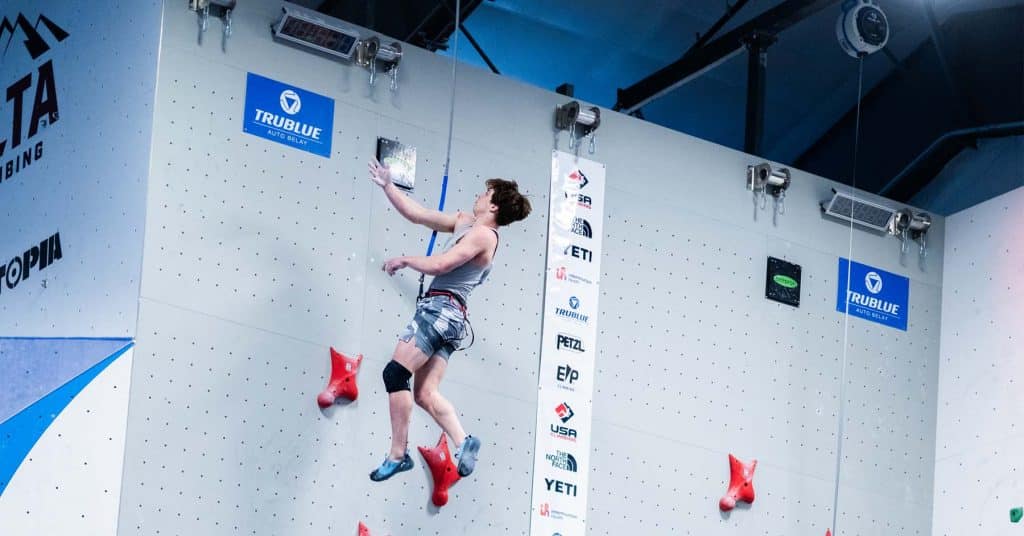This is the second installment of a series about how to apply business concepts in order to attract new customers and then convert them to members. Each week we will be looking at a specific business concept and explain how it relates to climbing gyms. You should be able to apply these business strategies to many facets of your business even though the main example in these articles will be auto belays. In this post I will be discussing how price elasticity of demand applies to climbing gyms. If you want to learn about how competitive advantage applies to climbing gyms you can go back to Part 1, or you can skip ahead to Part 3 to read about how to add value for your customers by better understanding buyer personas.
Price Elasticity of Demand
Understanding elasticity of demand can help you set prices to maximize revenue and improve sales forecasting by understanding the effect of a price change. The elasticity of demand is a fancy way of asking, “To what extent does the price of my product or service, affect the demand for my product or service?" Understanding elasticity of demand can help set prices for day passes and memberships in a way that will maximize revenue. Inelastic demand is a situation in which price has little to no effect on the quantity you sell. Gasoline is an inelastic good. People were still filling up their gas tanks when prices were over $4.00 a gallon. They were willing to pay an exorbitant price because they had to have gasoline to get where they needed to go. A large change in the price of gasoline resulted in a small change in the quantity demanded. An elastic good is the opposite of an inelastic good. An elastic good is one where demand is greatly affected by price. Oranges are an elastic good. If one farmer decides to unreasonably increase the price of his oranges then it's very easy for me to go to another farmer and buy their oranges instead. I might even decide to forgo oranges all together and buy an apple. It is extremely rare for a good or service to be either perfectly elastic or perfectly inelastic. In most situations, goods and services fall somewhere on a scale in between these two extremes.
Climbing gyms have an elastic demand. If an economic recession hits then people will cancel their gym memberships to save money. If there are two climbing gyms in an area that are mostly identical except for price then people will choose the cheaper option. Experienced climbers cancel their gym memberships in the summer when they can substitute outdoor climbing for gym climbing. These examples highlight the two most influential determinants of elasticity: income and substitute goods. The income effect influences the elasticity of demand due to a change in purchasing power. The direction of the income effect is dependent on whether the good is a normal or an inferior good. An example of an inferior good would be Ramen noodles. There is a negative correlation between the quantity demanded of an inferior good and income. If your income increases then you will buy less Ramen because you can afford better noodles. Normal goods have a positive correlation with income. The more money you have then the more of that good you will buy. Climbing gyms are a normal good. Some people can only afford to go to the gym once or twice a month. If their income level rises then they will attend the gym more often and might even invest in a membership. Auto belays are similar to climbing gyms in that they are a normal good. If a gym increases its net income then it will have more income to invest in auto belays and therefore buy more auto belays. If a climbing gym's net income decreases then they will have less money to buy auto belays and will have fewer auto belays in their gym.
The availability of substitute goods and services is the other main influence on the elasticity of demand. A substitute good is a good that is similar or the same to another product. A substitute service for a climbing gym might be the competitive climbing gym across town or it could be a different sport altogether like skiing or mountain biking. A perfect substitute is an alternative that completely satisfies the customer by providing the same benefits and utility as the original good. Perfect substitutes are hard to establish. Economists might consider Pepsi and Coke to be perfect substitutes but a consumer might disagree because they are brand loyal.
An uninformed consumer might consider friction braking auto belays and eddy current magnetic braking auto belays to be perfect substitutes. They both allow climbers to safely descend from a route. They both are modular and can change locations based on the gym owner's preference. They both cost about the same. In reality friction braking auto belays and eddy current magnetic braking auto belays are imperfect substitutes. Friction braking uses sacrificial parts that are designed to wear out over time. Eddy current magnetic braking auto belays do not have any sacrificial parts in their braking core, because they take advantage of a phenomenon called electromagnetic induction. You can learn more about the science behind this by clicking on the previous link. In short, you can achieve braking without friction because magnets and non-magnetic metals create opposing forces that can be harnessed to slow a climber's descent. Eddy current magnetic braking auto belays also have the added benefit of being self-regulating. This means that a 300-pound football player and a 35-pound child will descend at the same rate. With friction-based auto belays the 300-pound football player will descend drastically faster than the child. This is similar to how a semi-truck will have a much larger braking distance than a Toyota Prius. As you can see, factors such as brand loyalty and product awareness can determine whether someone considers a product to be a perfect or imperfect substitute.
The distinction between perfect and imperfect substitutes is less important than identifying how many valid substitute goods or services are in your industry. The number of available substitute goods should influence how you set prices. If there are no substitutes then you are a monopoly and you can set prices however you like. This is extremely rare, especially in the adventure industry. Even if there are not any outdoor crags or any other climbing gyms in your area there are a multitude of other leisure activities that consumers can substitute for climbing. Thankfully this means that we can skip a lengthy discussion about how the elasticity of demand applies to monopolies. (There is a wealth of research available on the web if you're interested in the subject). Most likely there are several viable substitutes to your climbing gym. A large number of substitute goods implies that a good has a highly elastic demand. Economics tells us in this situation that an increase in price will result in a large decrease in the quantity demanded. Increasing the price of your day passes and memberships will decrease the number of customers you get. Let's look at this a little more in-depth.
If you are thinking about raising your prices because there are more people that want to climb in your gym than your gym can facilitate, then you should test the waters by slightly increasing your price. A slight increase may be all that your market can handle. If you increase your price too much then you could actually decrease revenue. Sure you're getting more money per customer but it wasn't worth the large number of customers that now attend the gym across the street. The opposite could be true as well. If you are a gym struggling to pull people in then you might be able to get away with setting your prices only slightly lower than your competitors to draw people in. If you set your prices too low then you could have a million customers and still go bankrupt, if you aren't bringing in enough revenue to cover your expenses.
These scenarios assume that the only difference between you and your competition is the price. There are of course many other factors that will determine your market share. If you haven't already, you should go back and read Part 1 of this series where I specifically discuss how competitive advantage relates to pricing strategy. The most important factor that will determine your success may be how customers perceive the quality of your gym. Climbing gym demand is not perfectly elastic because no two gyms are exactly the same. Most people are willing to pay more for a membership at a better gym. What do climbers consider better? How much more are they willing to pay? It all depends on the perceived value. That is why it is important to intimately know who your target market is and what they value. Are you providing what your customers want? Are you doing it better than your competitors? If this interests you keep checking back for the next part of the series where I will discuss how adding customer value will help you gain customers and convert them to members. If you want to learn how to calculate elasticity of demand this Khan Academy video does a great job of explaining the basics.



